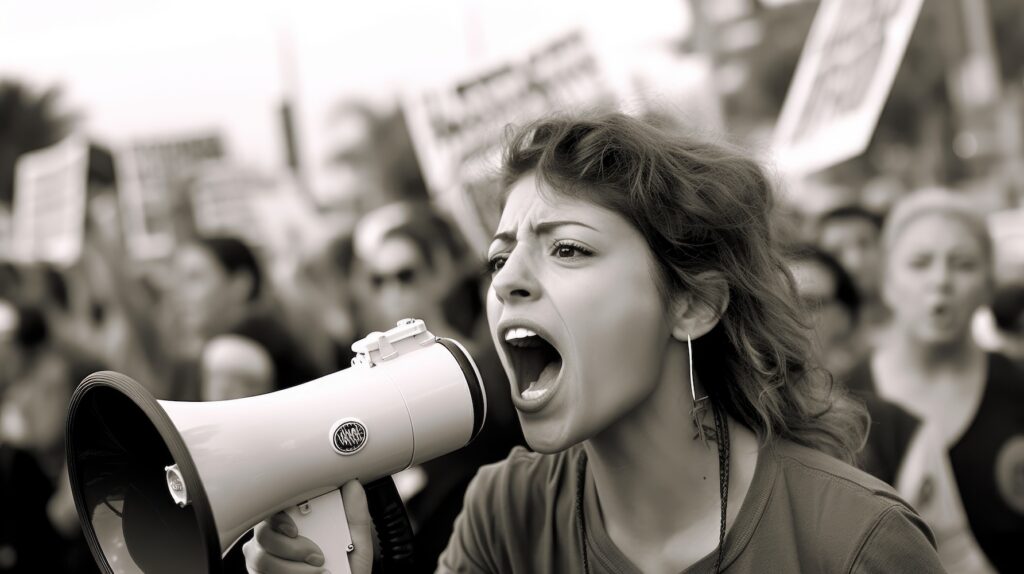Laid-off SPLC employees reveal internal dissension at far-left smear factory
(The Daily Signal) – This summer, the Southern Poverty Law Center laid off about a quarter of its staff, and former SPLC employees revealed more information about those layoffs this week,…

(The Daily Signal) – This summer, the Southern Poverty Law Center laid off about a quarter of its staff, and former SPLC employees revealed more information about those layoffs this week, accusing the organization of “classic union-busting behavior.”
Former employees of the SPLC’s education arm, Learning for Justice, published an open letter Tuesday outlining their experiences in the lead-up to the layoffs. They claimed the SPLC shifted the direction of their department, gave them more duties without more pay and without hiring more staff, and then abruptly fired most of them in June.
“We know it is no coincidence that the layoffs, which targeted mostly union members and union leadership, follow employee surveys that show declining confidence in SPLC management over the past couple of years,” the former employees wrote. “It’s also no coincidence that these layoffs happened less than a year before our union negotiates a new collective bargaining agreement.”
“From a social justice organization that refused to voluntarily recognize our union at its inception, it is classic union-busting behavior,” they added. The open letter also gave a concrete number of those SPLC laid off: 81.
The SPLC Union released a statement last week calling for SPLC CEO Margaret Huang to resign. Lisa Wright, the SPLC Union chair who was laid off after more than 23 years at the organization, wrote in that statement, “We believe [SPLC Board Chairwoman Karen] Baynes-Dunning hired Huang in 2020 to bust our union. Huang has a proven track record of hostility toward unionization.”
Learning for Justice
Learning for Justice, which launched as “Teaching Tolerance” in 1991, focused on providing teachers with materials promoting diversity. In the past few decades, however, the education program has embraced gender ideology for children in pre-kindergarten and promoted critical race theory (the lens through which teachers tell students that American society is systemically racist). The SPLC claims it is “teaching hard history” by framing American history, emphasizing what it claims to be the continuing oppression of black people (despite the progress of civil rights laws).
As the former staff recalled, the program was rebranded to “Learning for Justice” in 2021, and with that announcement came a change that shocked staff.
Newly hired Director Jalaya Liles Dunn noted at the time that Learning for Justice would “start working with caregivers and communities,” shifting the focus away from working with educators, the former staff noted.
Former staff also lamented the SPLC’s more recent announcement that “if states won’t let us teach Black history in schools, we’ll teach it in communities, as was done during Jim Crow.”
“This approach cedes ground to those seeking to erase or distort history in schools,” the ousted employees argued. “Stepping away from direct engagement with educators risks leaving students in hostile learning environments without the support they need.”
Yet, besides this ideological consideration, the laid-off workers added more practical concerns. They wrote that “there was no plan” for what a shift toward engaging communities “really looked like.”
“Staff members repeatedly advocated internally—even directly to SPLC President Margaret Huang—that SPLC’s commitment to working with communities should mean an investment in hiring more people who have experience and expertise working with community partners,” they wrote. “But the expansion of our work did not come with an expansion of staff. In fact, some positions that were vacated were never filled.”
Instead, the SPLC restructured Learning for Justice twice in less than four years, with only one position dedicated to community partnerships. “Supporting community-facing work became ‘everyone’s job,’ rather than hiring more staff with expertise in community education, organizing and other skills,” the former staff wrote. “Additionally, we were told everyone could participate in 501(c)(4) work for SPLC Action Fund, despite the job descriptions and pay of the majority of [Learning for Justice] staff not reflecting that additional policy work.”
SPLC Isn’t Hurting for Money
The laid-off workers noted that the SPLC isn’t exactly hurting for funding. The organization’s endowment stood at $731.9 million as of 2022. According to the union, Huang gave conflicting reasons for the layoffs: she told some SPLC leaders that the organization had a budget shortfall and others that leadership wished to restructure the group.
“SPLC has the resources for community education and advocacy and direct educator support. We don’t need to choose one or the other,” the former staff wrote. “Additionally, will community education work not require operations support or website development? The SPLC’s decision to eliminate those roles, for example, suggests a disingenuous commitment to their proposed new strategic direction.”
The staff also claimed that Learning for Justice managers with years of experience “did not receive willing collaboration from new leadership, nor a seat at the table to discuss [the project’s] future.”
From this report, it does seem the SPLC mismanaged that department and may even have structured things in such a way as to justify mass layoffs.
The SPLC did not respond to The Daily Signal’s request for comment about the former employees’ claims.
The Fallout
The letter begins and ends with an expression of thanks to the teachers who worked with or read materials from the SPLC. The former staff appear to be driving a wedge between the SPLC and the educators who agree with its leftist positions.
The very existence of the open letter speaks volumes. Not only is the SPLC Union willing to reveal the internal dissension at the organization, but it seems these former staff are willing to burn bridges between their former employer and the teachers who support its causes. Teaching Tolerance once boasted that “more than 500,000 educators … read our magazine.” Now, the educators who are most favorably disposed to the SPLC may turn on it.
What Is the SPLC?
As I explain in my book “Making Hate Pay: The Corruption of the Southern Poverty Law Center,” the SPLC routinely smears mainstream conservative and Christian organizations by placing them on a “hate map” alongside chapters of the Ku Klux Klan.
The SPLC uses the “hate map” as a reputational weapon to silence those who dissent from its woke agenda. While Learning for Justice pushes critical race theory and gender ideology, the “hate map” smears parental rights groups, such as Moms for Liberty and Parents Defending Education as “extremists.”
In 2019, the SPLC fired its co-founder and saw its president resign amid a racial discrimination and sexual harassment scandal. At that time, a former employee called the “hate” accusations a “highly profitable scam.” Employees decided to unionize after that scandal.
The SPLC currently faces a defamation lawsuit that crossed a major legal hurdle last year.
https://youtube.com/watch?v=j91pJDQ3rko%3Ffeature%3Doembed%26enablejsapi%3D1%26origin%3Dhttps%253A%252F%252Fwww.dailysignal.com
The SPLC also has influence in the federal government. In the fall of 2021, Huang bragged that the then still new administration of President Joe Biden had reached out to the SPLC earlier in the year for help in fighting “domestic terrorism.”
The FBI’s Richmond office notoriously cited the SPLC in a since-retracted memo calling for surveillance at Catholic churches last year.
The SPLC briefed the Justice Department and a high-ranking official of the Department of Education.
SPLC leaders and staff have attended White House meetings at least 18 times since January 2021, and Biden appointed an SPLC attorney, Nancy Abudu, to the U.S. Court of Appeals for the 11th Circuit.



